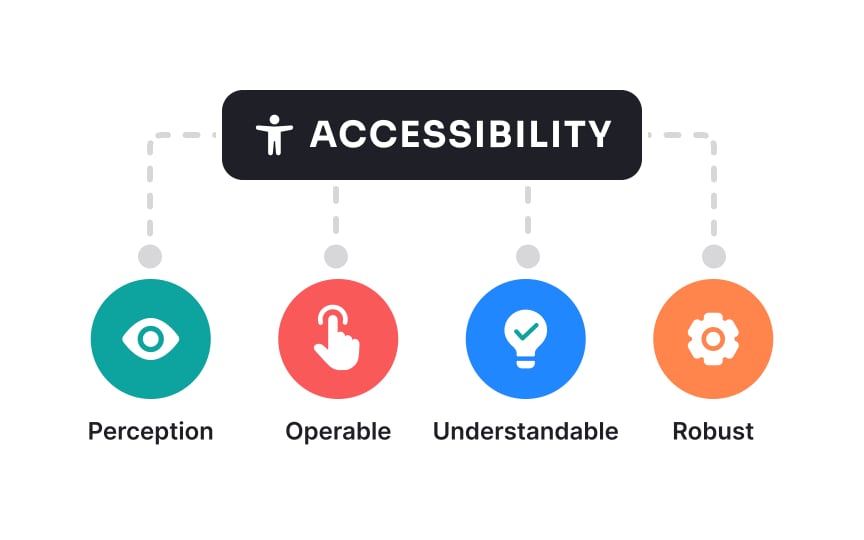WCAG principles overview
Web Content Accessibility Guidelines (WCAG) form the foundation of accessible design, built around 4 key principles:
- The Perceivable principle ensures content can be detected through various senses
- The Operable principle focuses on interface functionality regardless of how users interact with devices
- The Understandable principle guides creating clear, predictable interfaces with helpful guidance
- The Robust principle ensures content remains accessible as technologies evolve.
Each principle contains specific success criteria across 3 compliance levels (A, AA, AAA), allowing teams to measure accessibility objectively. Understanding these foundational principles helps design teams integrate accessibility throughout the audit process rather than treating it as a separate checklist. When conducting an accessibility audit, use these principles as your primary evaluation framework.[1]

